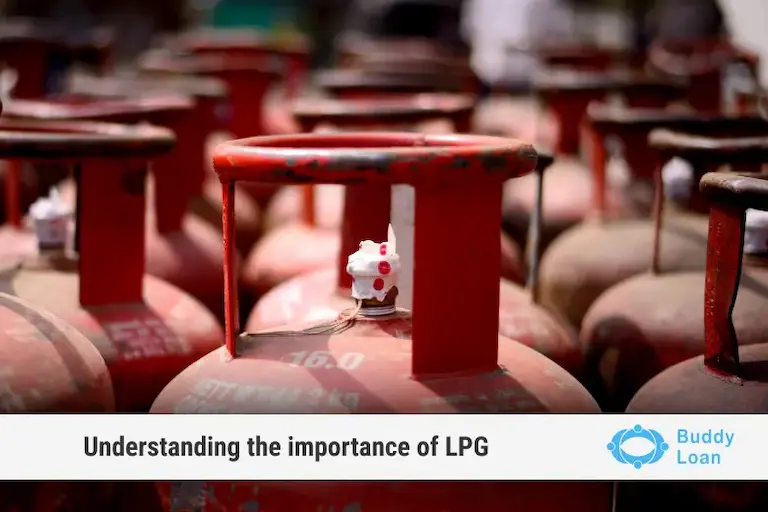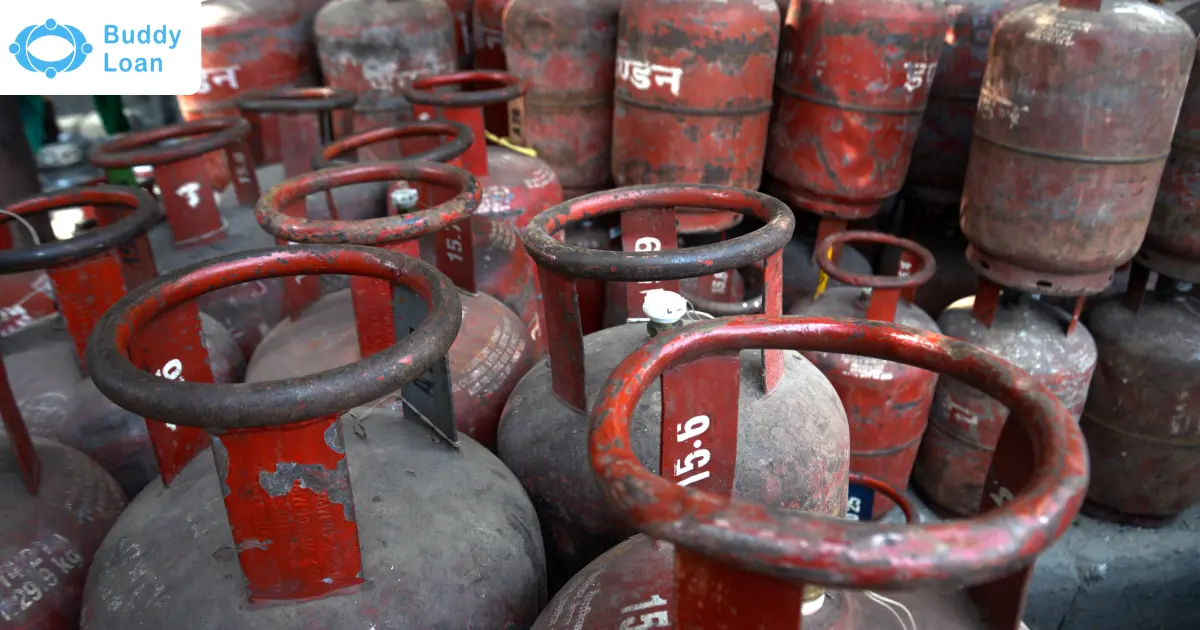People worldwide commonly use LPG (LPG Full Form: Liquefied Petroleum Gas), especially for cooking and heating. They value it for its efficiency, cost-effectiveness, and clean-burning properties, and it powers homes, businesses, and industries. This blog will explore what LPG is, its composition, benefits, environmental impact, and its role in the future of energy.
More About LPG
LPG stands for Liquefied Petroleum Gas and is a versatile, easily transportable fuel source. They store it in a liquid state in cylinders and use it widely for heating, cooking, and even powering some vehicles. This name highlights how they process and store the gas. LPG is created by liquefying gases like propane and butane under moderate pressure, allowing it to be stored in a compact, easily transportable form.
Common Uses of LPG
People worldwide use LPG for various purposes, with some common applications
- Cooking: LPG is popular in kitchens worldwide due to its clean burn and high efficiency.
- Heating: Often used in space and water heaters.
- Industrial Applications: Manufacturing processes that require intense heat, such as metal fabrication, use LPG.
- Automotive Fuel: LPG, also known as Autogas, powers some vehicles due to its lower emissions compared to petrol or diesel.
| The LPG price as of November for: Domestic (14.2Kg) is ₹ 805.50 Commercial (19 Kg) is ₹ 1,879.00 |
Liquefaction Process of LPG Gas
Liquefying the gas makes it more efficient to store and transport, offering convenience for both suppliers and consumers.
Compression and Cooling: The process compresses and cools LPG, turning it from a gas to a liquid.
Storage: LPG can be stored in pressurized cylinders once liquefied, and households commonly use these cylinders
Composition of LPG
Propane and butane gases primarily make up LPG. These hydrocarbons come from natural gas and oil extraction. Different proportions of these gases are combined based on climate and usage requirements.
Characteristics of Propane and Butane
1. Propane: Known for its high energy content and ability to vaporise even in cold temperatures, making it ideal for outdoor and cold-climate use.
2. Butane: Less volatile in colder temperatures, so it’s more suited for indoor and warm-weather applications.
LPG providers adjust the propane-butane mixture based on the climate where it will be used. For instance, areas with cold weather may receive LPG with higher propane content to ensure usability in low temperatures.
Advantages of Using LPG
LPG offers multiple benefits, making it a popular choice among consumers:
- Clean-Burning Fuel: LPG produces minimal carbon emissions and fewer pollutants compared to other fossil fuels, helping to reduce indoor and outdoor air pollution.
- Versatile Applications: It’s used in cooking, heating, and even as vehicle fuel, showcasing its adaptability.
- Cost-Effective: LPG is affordable, especially for households that depend on it for cooking. The price per cylinder is often subsidised, which makes it accessible to more people.
- Safety Measures: Modern LPG cylinders and appliances are equipped with safety features, such as pressure-release valves, to minimise risks. Store cylinders in ventilated areas and conduct regular checks for leakage.
Overall, LPG is not only versatile and affordable but also a safer and cleaner option than many alternative fuels.
Environmental Impact of LPG
LPG’s relatively low environmental impact compared to other fossil fuels is one of its significant advantages
- Lower Carbon Emissions: LPG emits less CO₂ compared to coal, wood, and even some types of gasoline, making it a cleaner choice.
- Reduced Particulate Matter: Unlike solid fuels like wood and coal, LPG burns cleanly without producing harmful particulates, improving air quality indoors and outdoors.
By using LPG, households and businesses can reduce their carbon footprint, contributing to efforts in climate change mitigation.
History of LPG in India
The history of LPG (Liquefied Petroleum Gas) in India is a story of transformation in how people cook and access energy in their homes.
LPG first came to India in the 1950s, but at that time, it was a luxury mainly available in cities and for wealthier households. The government realised that LPG, a clean and efficient fuel, could greatly improve the lives of Indians, especially by reducing dependence on wood and coal, which are harmful to health and the environment.
In the 1970s, Indian Oil Corporation (IOC) started producing and distributing LPG. Over time, the use of LPG began to expand, and by the 1980s and 90s, it became a standard cooking fuel in many urban homes. However, rural areas still faced limited access.
Recognizing this, the Indian government launched initiatives to make LPG more accessible and affordable, especially for rural households. One of the most impactful programs has been the Pradhan Mantri Ujjwala Yojana (PMUY), launched in 2016. Through this program, millions of rural women received free LPG connections, bringing cleaner cooking fuel to millions of households for the first time.
Today, LPG is a common household fuel across India, and the country has one of the world’s largest LPG distribution networks. The journey of LPG in India reflects a shift towards cleaner, more accessible energy that continues to improve the quality of life for millions.
Conclusion
LPG (Liquefied Petroleum Gas) Full Form is a valuable fuel resource with a wide range of applications, from household cooking to industrial processes. Its clean-burning properties, cost-effectiveness, and adaptability make it an ideal choice for diverse uses. As the world moves towards more sustainable energy options, LPG continues to play a role in reducing emissions and offering cleaner energy.
With responsible usage, LPG can be an efficient and environmentally friendly choice for consumers. Consider sharing this information to spread awareness about the benefits of LPG and its role in a sustainable future!
Get the free Buddy Loan app on your phoneDownload the Buddy Loan app now!
Having any queries? Do reach us at info@buddyloan.com




